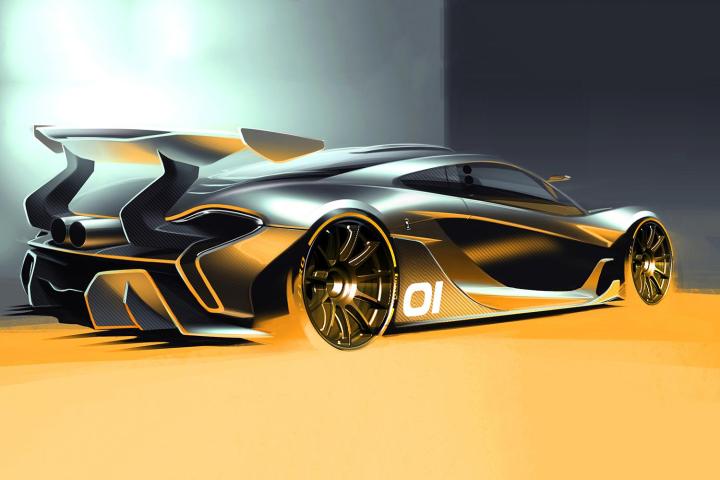
Inspired by the McLaren F1 GTR that won the 24 Hours of Le Mans in 1995, the P1 GTR will debut in concept form at the 2014 Pebble Beach Concours d’Elegance, but McLaren has already released a teaser rendering to whet customers’ appetites.
Befitting the GTR moniker, the car looks much more aggressive than a standard P1, something that shouldn’t be possible. The rear three-quarter view is dominated by a massive wing spoiler and centered exhaust outlets that look like a battleship’s guns.
The small details are also pretty interesting. Exposed clips for the engine cover hint at McLaren’s weight-saving regimen, while holes in the windows indicate that they don’t open.
The tiny mirrors perched on the A-pillars add a cool touch, and don’t worry about them passing muster at the DMV, because the P1 GTR isn’t intended for street use.
Along with the rumored Ferrari LaFerrari XX, the P1 GTR will join a small group of track-toy supercars that aren’t street legal.
Taking full advantage of that, McLaren will equip the GTR with racing-style slick tires, and boost the hybrid power train’s output from 903 horsepower to 986 hp.
All of that comes with an expected price tag of $3.36 million. Production isn’t set to start until after the last standard P1 is delivered, so McLaren will likely try to close a few sales at its Pebble Beach tent.


